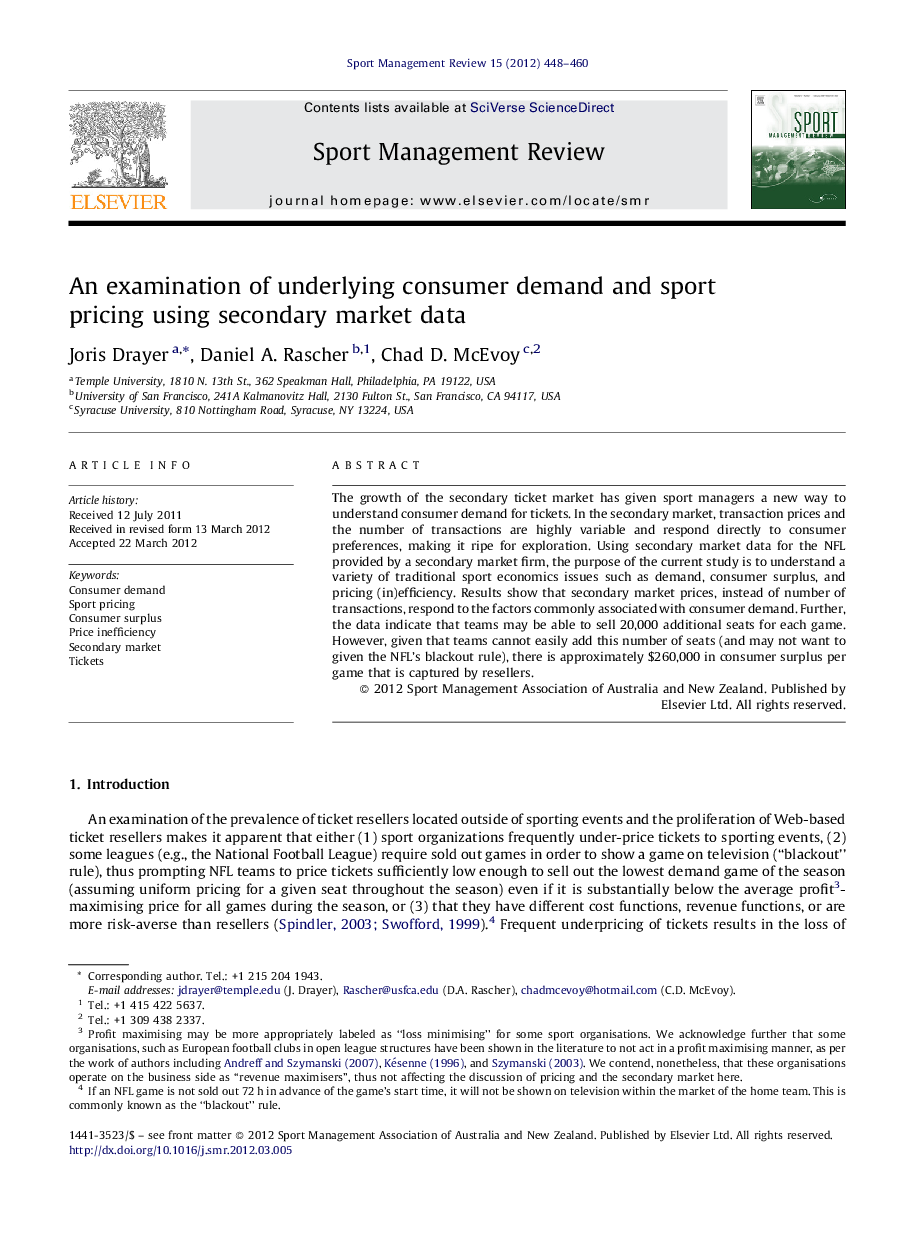| Article ID | Journal | Published Year | Pages | File Type |
|---|---|---|---|---|
| 141107 | Sport Management Review | 2012 | 13 Pages |
The growth of the secondary ticket market has given sport managers a new way to understand consumer demand for tickets. In the secondary market, transaction prices and the number of transactions are highly variable and respond directly to consumer preferences, making it ripe for exploration. Using secondary market data for the NFL provided by a secondary market firm, the purpose of the current study is to understand a variety of traditional sport economics issues such as demand, consumer surplus, and pricing (in)efficiency. Results show that secondary market prices, instead of number of transactions, respond to the factors commonly associated with consumer demand. Further, the data indicate that teams may be able to sell 20,000 additional seats for each game. However, given that teams cannot easily add this number of seats (and may not want to given the NFL's blackout rule), there is approximately $260,000 in consumer surplus per game that is captured by resellers.
► The purpose of the study is to understand demand, consumer surplus, and pricing (in)efficiency. ► Secondary market prices, instead of number of transactions, explain changes in consumer demand. ► Data indicate that NFL teams may be able to sell 20,000 additional seats for each game. ► There is approximately $260,000 in consumer surplus per game that is captured by resellers.
